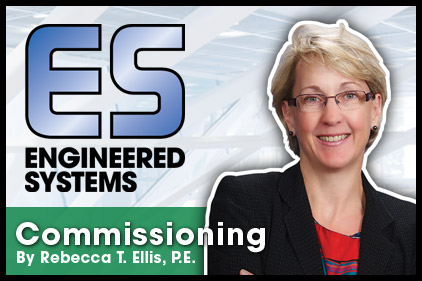HVAC systems can do amazing things these days — things that were unthinkable even 20 years ago. Computer technology, communications technology, integration with the worldwide web, and the emphasis on smart buildings as a means to reducing our consumption of natural resources have led to the ability to do just about anything we can think of.
It has been a fun time to be in the commissioning business because we get to see many of these new ideas and technologies applied in real facilities and participate in the process of troubleshooting them and making them work. We have seen an uptick in very complex HVAC systems that are clearly intended to squeeze as much energy out of building operations as possible. These are not particularly difficult systems to envision or design, but we have seen great challenges in their implementation and long-term sustainability.
The only benefit of such complex systems is, indeed, the potential to save energy costs over the life of the building, and that is an admirable objective. However, the potential risks and costs inherent to complex systems include the following:
- Higher first cost
- Contractors unqualified to implement the design
- Extended functional performance testing and acceptance period
- Intense operator training and documentation requirements
- Expanded maintenance activities to sustain proper operation
- Advanced operations staff capabilities to monitor and understand system operation in order to identify problems and resolve them
- Owner commitment to sustaining proper operation of the systems (i.e., funding for items 5 and 6)
Failure to operate the systems properly, or failure even to get them to function as intended in the first place, could result in more energy use than a simpler system operated well.
I recommend a design-phase evaluation of the energy savings benefits against the additional costs of implementation and operation. This assessment must include the owner’s facilities management representatives as well as the owner’s project management and sustainability professionals. Sometimes project teams evaluate the additional first cost against the potential energy savings benefits for very complex systems. The question of additional startup and operational costs is acknowledged but almost never quantified or subjected to a risk assessment.
We have commissioned enough complex HVAC systems to know that the risks and costs, especially the on-going operational demands, are often a big surprise to the owner when construction is complete. An early and candid discussion with the owner’s operations and maintenance representatives should provide the project team with a good sense for the owner’s appetite to take on and capability to manage a very complex system. If the facilities representatives do not have enough sophistication to even actively participate in that conversation, I believe the project team needs to be creative about designing systems that are thoughtful, elegant, and reasonably efficient in their simplicity.
The fact is there are many small- to medium-sized facility owners who need buildings but do not have the resources to staff them with the level of expertise needed to operate today’s highest-performing systems. These include non-profit organizations, small town school systems, senior housing developments, small business owners, et al. The best service to those owners would be to customize designs for their needs and capabilities, even when they tell the project team they want the most energy-efficient and/or sustainable building possible for the project budget. True sustainability requires a long-term commitment of which the owner must be made aware and to which the owner must agree, if the complex and demanding systems are to be a long-term success.



